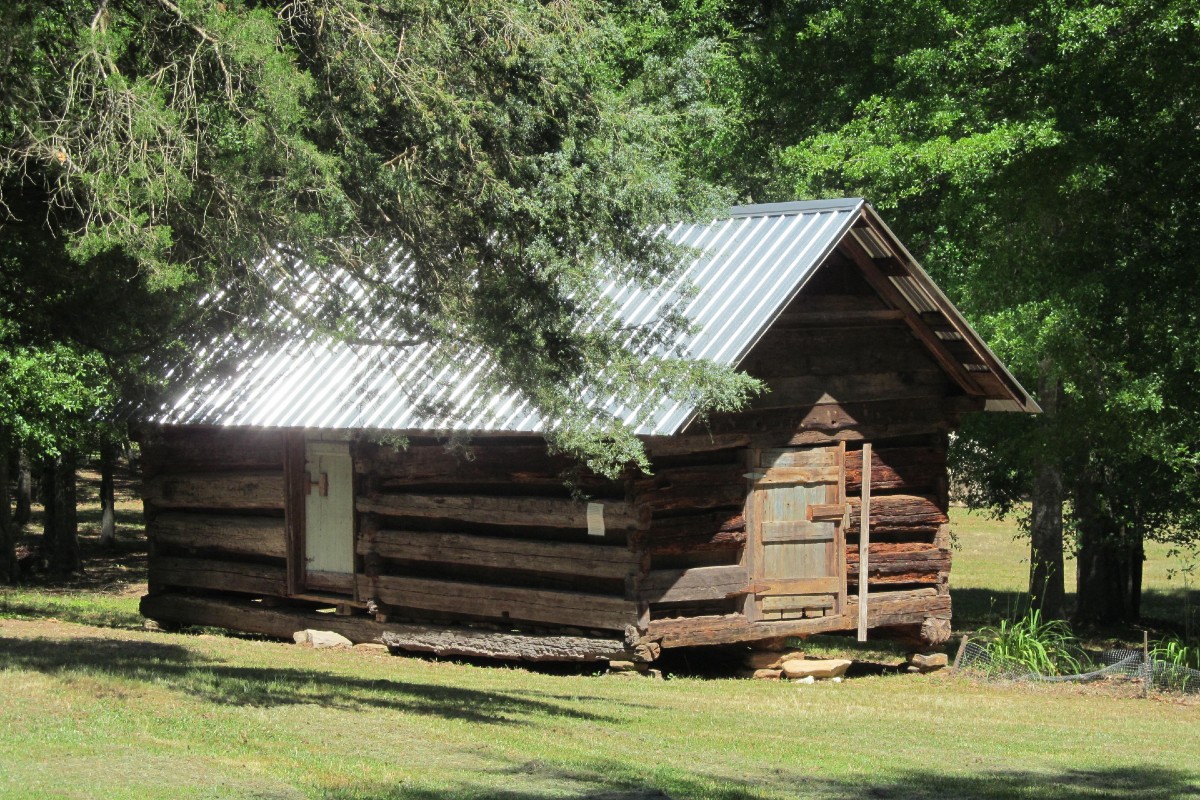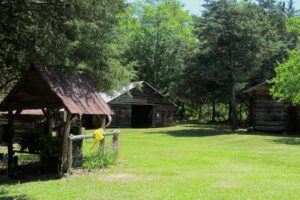By Elliott Brack
Editor and Publisher, GwinnettForum
OCT. 7, 2022 | A North Georgia family foundation is restoring one of the oldest forts in Georgia, dating to 1793. It’s Fort Hollingsworth, located near Alto in Banks County. Beacher and Mellie Segars White obtained the property in 1936. Their children were born and raised here with the property passing to the children in 1980. The White family set up a foundation, “Friends of the Fort,” to preserve the fort and historic houses surrounding it, and to educate and inform the public of this time in Georgia’s history.
![]() Today the property looks much like it did in the 1860s, and is listed on the National Register of Historic Places. The house is two stories, the right side built from hand-hewn logs, with half-dovetailed corner joints.
Today the property looks much like it did in the 1860s, and is listed on the National Register of Historic Places. The house is two stories, the right side built from hand-hewn logs, with half-dovetailed corner joints.
Other historic structures within Banks County have been moved to the site under the White family’s care. Those buildings include a farmhouse, two pen cribs, a barn, cook’s cabin, smokehouse and a log cabin once housed inside the fort’s walls.
The foundation is now in the midst of erecting a 100-150 person heritage center and rest rooms, much like a community center, for classes, history lessons and events. So far they have raised $130,000, and now need additional funds to finish the restoration project.
There are five White family members involved. Officers of the Foundation are Willete Mote of Demorest, president; Edith Goodson of Banks County, vice president; Trudy Galloway of Banks County, secretary; and Deanna Mote of Habersham County, treasurer.
For 23 years, the White family held an annual festival at their home place, but this was halted when the Covid pandemic hit. They hope to restart a festival when work is completed at the Fort, perhaps as early as next spring.
There are few remnants left of the once thriving town bearing the name “Hollingsworth.” In the past, it included a general store and post office that served the surrounding area in the late 19th and early 20th centuries. Just a couple of miles outside that diminished town, however, still stands the structure that harkens back to an important era where this part of the state was considered the “frontier” and is a representation of the post-Antebellum period.
Fort Hollingsworth (also known as the “White house”) by best estimates was constructed in 1793 as part of a series of “forts” built along the boundary lines between the state of Georgia and the Cherokee Nation. This boundary line stretched from Currahee Mountain in Stephens County to the northeastern part of Gwinnett County.
When an earlier owner learned that their land was considered in Cherokee territory, he petitioned to have the boundary line re-drawn. The result was the “Four Mile Purchase” of 1804. The Indians ceded a strip of land four miles wide (from the Habersham – Banks County line on Baldwin Mountain, to Line Baptist Church on old U.S. Highway 441) and 23 miles long (extending from Currahee Mountain to the headwaters of the South Oconee River) which included Fort Hollingsworth.
By 1796, conflicts with local Native Americans were no longer a concern and the string of frontier forts became unnecessary and were repurposed as log farmhouses.
Willette Mote remembers growing up at the site, playing in the fort upstairs, and looking out its windows. “I’ve loved it my entire life. Back as a child, I didn’t understand why people would want to stop on the road and look at our house, or then come in and look all over the house. Since then it’s been my life’s mission to take care of it.”
The property is located at 2307 Wynn Lake Road, Alto, Ga.
- Have a comment? Send to: elliott@brack.net











Follow Us